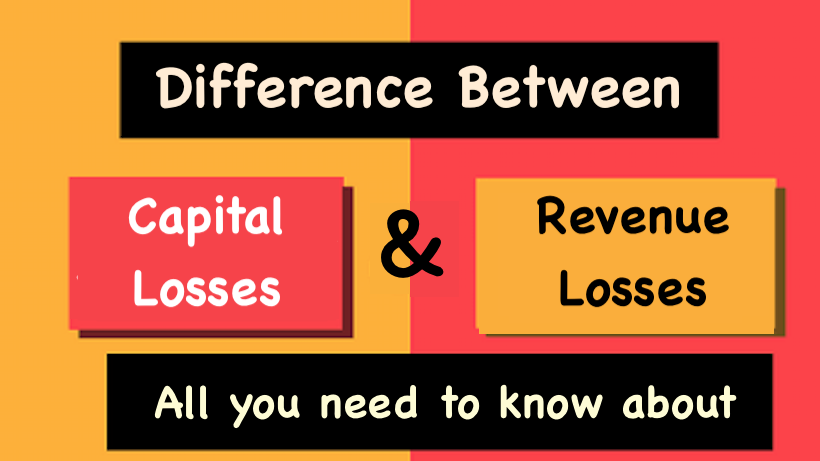The loss suffered by a company on the sale of fixed assets, The loss suffered by the business in the ordinary course of business is called revenue loss.
Capital and Revenue Losses:
Revenue losses are the losses which arise during the normal course of business whereas capital losses are those which occur when selling fixed assets or raising share capital. If a building purchased for Rs 5,00,000 is sold for Rs 4,50,000, there will be capital loss of Rs 50,000. Similarly, when shares of the face value of Rs 101 are issued at Rs 9 i.e. at a discount of Rs 1, the amount of discount will be a capital loss.
Treatment of capital losses is not different from that of capital profits. Just as capital profits are not shown in the profit and loss account, similarly capital losses are not shown in the profit and loss account. They are shown in the balance sheet on the assets side. As and when capital profits arise, capital losses are gradually written off against them. If however, capital losses are huge, the common practice is to spread them over a number of years and charge a part thereof to profit and loss account of each such year. But if they are negligible, they are debited to profit and loss account of the year in which they occur.
Causes: Capital loss occurs due to the sale of assets, share and debentures at a price less than their face value or book value. Revenue loss occurs due to heavy amount of operating expenses and low turnover or sales.
Advertisement
Content in this Article
Nature: Capital loss does not occur in the normal course of the business. Revenue loss occurs in the normal course of the business.
Concept And Meaning of Revenue Losses
Revenue loss occurs in the ordinary course of the business. It results due to inefficiency in operating regular activities of the business. It results from theheavyamount of operating expenses and low amount of turnover. It is shown as debit balance on thedebit side of the tradingand profit and loss accounts. It adversely affects the amount of capital and stability of the business.
The capital loss includes:
- Accidental loss of fixed assets.
- issueof securities at discount.
- Redemption of securities at the premium.
- Embezzlement of case by the unauthorized person.
- Obsolescence losses.lossesby flood and earthquake etc.
The Revenue loss includes:
- Embezzlementof cash by the cashier.
- Embezzlement of goods by the storekeeper.
- Bad debts.
- Loss by fire of unsecured goods.
- Depreciation loss on sale of depreciable asset.
- Provision for doubtful debtsand loss of goods due to the carelessness of the employee.
Recommended


Thanks for your information….